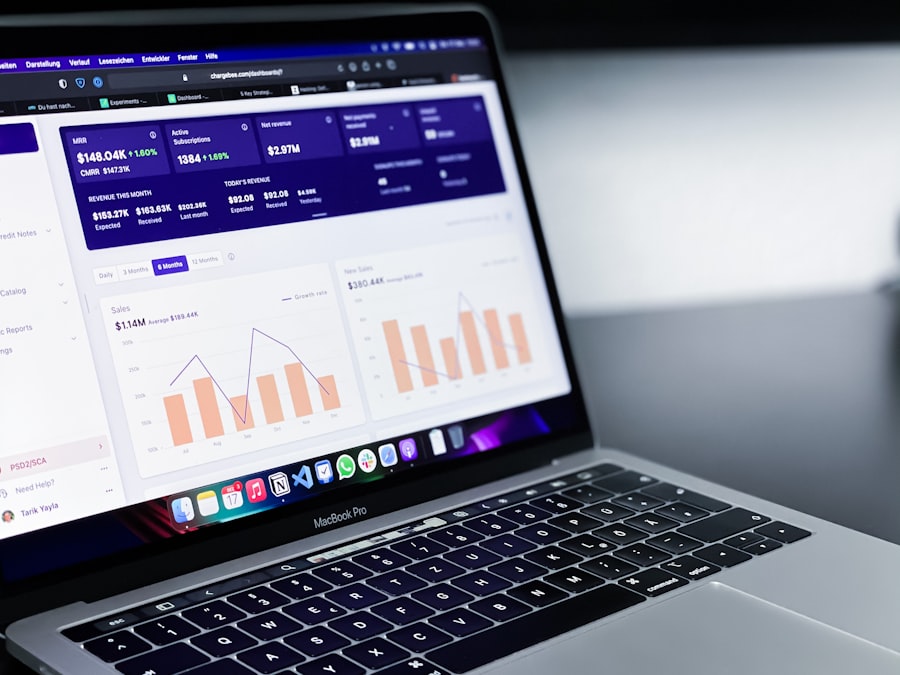Name, Image, and Likeness (NIL) marketing has emerged as a transformative force in the landscape of collegiate athletics. This paradigm shift allows student-athletes to monetize their personal brand by leveraging their name, image, and likeness. The NCAA’s decision to permit athletes to profit from endorsements, sponsorships, and other commercial opportunities has opened a new frontier for marketing strategies.
This change not only empowers athletes but also presents unique challenges and opportunities for brands looking to engage with this demographic. NIL marketing is not merely about financial transactions; it encompasses the broader narrative of personal branding. Athletes are now seen as influencers, capable of shaping consumer behavior and brand perception.
This evolution necessitates a nuanced understanding of how to effectively market to and through these athletes. Brands must recognize that NIL marketing is about authenticity and connection. The most successful campaigns will resonate with the athlete’s audience, reflecting their values and interests while aligning with the brand’s message.
Key Takeaways
- NIL marketing requires a clear understanding of athlete name, image, and likeness rights.
- Identifying and targeting the right audience is crucial for campaign success.
- Creating engaging and authentic content drives better fan connection and engagement.
- Utilizing social media and influencer collaborations amplifies reach and impact.
- Continuously measuring performance and adapting to NIL regulation changes ensures sustainable partnerships.
Identifying Target Audience
Identifying the target audience is a critical step in any marketing strategy, and NIL marketing is no exception. The audience for NIL campaigns can be diverse, encompassing not only fans of the athlete but also potential customers who share similar interests or demographics. Brands must conduct thorough market research to understand who their ideal consumers are and how they relate to the athletes they wish to partner with.
This involves analyzing factors such as age, location, interests, and purchasing behavior. For instance, a college football player with a significant following on social media may attract a younger demographic that is highly engaged with sports culture. Brands targeting this audience might focus on lifestyle products, athletic gear, or health supplements that resonate with the interests of young sports fans.
Conversely, an athlete known for their academic achievements may appeal to a more niche audience interested in educational products or services. By clearly defining the target audience, brands can tailor their messaging and choose the right athletes to represent their products effectively.
Creating Compelling Content

Creating compelling content is at the heart of successful NIL marketing campaigns. The content must not only capture attention but also foster engagement and build a connection between the athlete and their audience. This requires a deep understanding of storytelling techniques that resonate with fans.
Athletes have unique stories that can be leveraged to create authentic narratives that highlight their journey, struggles, and triumphs. For example, an athlete who has overcome significant obstacles to reach their current status can share their story through various mediums—social media posts, video documentaries, or blog articles. This type of content not only humanizes the athlete but also creates an emotional connection with the audience.
Brands can collaborate with athletes to co-create content that aligns with both the athlete’s personal brand and the brand’s messaging. This collaborative approach ensures that the content feels genuine and relatable, which is crucial in building trust with consumers.
Leveraging Social Media Platforms
| Social Media Platform | Monthly Active Users (Millions) | Average Engagement Rate (%) | Primary Content Type | Best Use Case |
|---|---|---|---|---|
| 2900 | 0.09 | Text, Images, Videos | Brand Awareness, Community Building | |
| 2000 | 1.22 | Images, Stories, Reels | Visual Marketing, Influencer Collaboration | |
| 450 | 0.045 | Text, Images, Videos | Real-time Updates, Customer Service | |
| 900 | 0.54 | Articles, Professional Updates | B2B Marketing, Networking | |
| TikTok | 1500 | 5.30 | Short Videos | Viral Content, Youth Engagement |
| 450 | 0.20 | Images, Infographics | Product Discovery, DIY Inspiration |
Social media platforms are indispensable tools in NIL marketing strategies. With millions of users engaging daily on platforms like Instagram, TikTok, Twitter, and Facebook, these channels provide an unparalleled opportunity for athletes to connect with their fans and promote brands. Each platform has its unique characteristics and user demographics, which brands must consider when developing their marketing strategies.
For instance, TikTok is known for its short-form video content that thrives on creativity and trends. An athlete could leverage this platform by participating in viral challenges or creating entertaining content that showcases their personality while subtly integrating brand messaging. On the other hand, Instagram offers a visually-driven experience where high-quality images and stories can effectively highlight products or services.
By utilizing these platforms strategically, brands can maximize their reach and engagement with target audiences.
Collaborating with Influencers
Collaboration with influencers is a powerful strategy within NIL marketing. Athletes themselves are often viewed as influencers due to their established fan base and credibility within their respective sports. However, brands can also benefit from partnering with other influencers who align with their values and target audience.
These collaborations can amplify brand messages and extend reach beyond the athlete’s immediate following. For example, a basketball player might collaborate with a fitness influencer to promote a new line of athletic wear. This partnership not only leverages the athlete’s credibility but also taps into the fitness influencer’s audience, creating a synergistic effect that enhances visibility for both parties.
Additionally, influencer collaborations can take various forms, including joint social media campaigns, co-hosted events, or even product development initiatives. By strategically selecting influencers who resonate with their brand ethos, companies can create impactful campaigns that drive engagement and conversions.
Measuring and Analyzing Campaign Performance

Measuring and analyzing campaign performance is essential for understanding the effectiveness of NIL marketing efforts. Brands must establish clear metrics to evaluate success, such as engagement rates, reach, conversion rates, and return on investment (ROI). Utilizing analytics tools can provide valuable insights into how well campaigns are performing and where adjustments may be necessary.
For instance, if an athlete’s social media posts are generating high engagement but low conversion rates for a specific product, it may indicate that while the content resonates with the audience, the call-to-action or product offering needs refinement. Regularly analyzing these metrics allows brands to make data-driven decisions that enhance future campaigns. Furthermore, A/B testing different content formats or messaging strategies can help identify what resonates best with the target audience, leading to more effective marketing initiatives over time.
Building Long-Term Partnerships
Building long-term partnerships with athletes is a strategic approach that can yield significant benefits for brands engaged in NIL marketing. Rather than pursuing one-off endorsements or short-term campaigns, brands should focus on cultivating relationships that foster loyalty and authenticity. Long-term partnerships allow brands to develop deeper narratives around their products while aligning themselves closely with an athlete’s journey.
For example, a sports drink company might partner with an athlete throughout their college career and into their professional life. This ongoing relationship enables the brand to tell a cohesive story about the athlete’s growth and achievements while consistently promoting its products as part of their training regimen. Such partnerships not only enhance brand credibility but also create a sense of community among fans who follow both the athlete and the brand over time.
Adapting to Changes in NIL Regulations
The landscape of NIL marketing is continually evolving as regulations surrounding athlete endorsements change. Brands must stay informed about these developments to ensure compliance while maximizing opportunities for engagement. The NCAA’s guidelines regarding NIL rights have already undergone significant revisions since their inception, reflecting broader societal shifts in how we view amateur athletics.
For instance, some states have enacted laws that provide more favorable conditions for student-athletes seeking endorsement deals than others. Brands operating in multiple states must navigate these complexities carefully to avoid legal pitfalls while still engaging effectively with athletes across different regions. Additionally, as public sentiment around NIL rights continues to evolve, brands should be prepared to adapt their strategies accordingly—whether that means adjusting messaging to align with changing consumer expectations or exploring new partnership opportunities as regulations shift.
In conclusion, NIL marketing represents a dynamic intersection of sports, branding, and consumer engagement that requires careful consideration of various factors—from identifying target audiences to navigating regulatory changes. By understanding these elements and implementing strategic approaches across all facets of NIL marketing, brands can effectively harness the power of student-athletes’ personal brands while fostering authentic connections with consumers.



